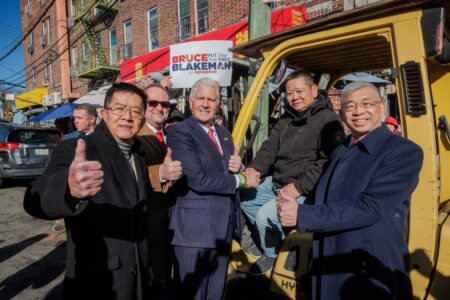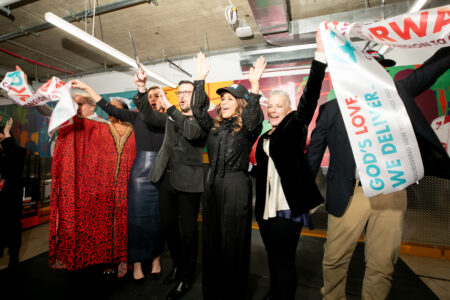SOUTHERN BROOKLYN — Two-ways tolls are on the verge of coming back to the Verrazzano-Narrows Bridge, courtesy of the House of Representatives.
A two-way toll system, also called split tolling, for the Bay Ridge-to-Staten Island bridge was included in a massive $1.4 trillion government spending bill approved by the house on Dec. 17.
U.S Reps. Max Rose, Jerrold Nadler and Nydia Velázquez, all of whom represent parts of Brooklyn, pushed for split tolls on the Verrazzano-Narrows Bridge to be included in the spending bill.
The legislation, which is expected to be passed by the Senate and signed into law by President Trump by the end of the week, includes funding for the federal departments of Defense, Education, Housing and Urban Development, and Health and Human Services.
The current one-way toll on the bridge was instituted through federal legislation in the 1980s. Under that system, the toll is paid by motorists traveling westbound (toward Staten Island). Eastbound motorists (those traveling toward Brooklyn) drive for free.
The Verrazzano-Narrows Bridge is the only one in the country with a federally mandated one-way toll system.
The one-way toll is currently $19.00. Under split tolling, drivers will pay $9.50 in each direction. Staten Island residents and drivers with E-ZPass get a discount on the tolls.
One-way tolls have been the focus of lawmakers’ ire for several years. Elected officials charge that the Metropolitan Transportation Authority, which oversees New York City’s bridges and tunnels, loses millions of dollars in tolls each year because of truckers who drive eastbound over the bridge and then avoid the toll on the return trip by driving through Manhattan and crossing into New Jersey.
Rose, a Democrat representing Bay Ridge, Southwest Brooklyn and Staten Island, said the plan to restore split tolling enjoys a great deal of support.
“Thanks to the overwhelmingly bipartisan support from every level of government, outdated federal laws will no longer create traffic on the expressway and let New Jersey truckers skip out on paying the same tolls we pay every damn day,” Rose said.
Traffic will improve under a split-tolling system, according to Nadler, a Democrat whose district includes parts of Manhattan, Bay Ridge and Bensonhurst.
“Restoring split-tolling will greatly improve traffic and congestion in Brooklyn and Lower Manhattan, while also capturing new vital funding for the MTA from out-of-state trucks, which no longer will avoid a toll entering New York City via Staten Island or dodge tolls on the Hudson River Bridge and tunnel crossings,” Nadler said.
The split tolls will also result in fewer trucks on the Staten Island Expressway, Gowanus Expressway, Manhattan Bridge and Canal and Broome Streets in Lower Manhattan, Nadler said.
“Split-tolling promises improvements in traffic flow throughout the city and I’m proud to have worked with my colleagues Congressmen Rose and Nadler to, at long last, see this fix passed into law,” said Velázquez, a Democrat representing parts of Manhattan, Brooklyn and Queens.
“By reversing this antiquated federal law, we’ll see fewer trucks entering the city by way of Staten Island and Brooklyn,” Velázquez added.
U.S. Sen. Charles Schumer, who worked with Rose, Nadler and Velázquez to move the two-way toll plan forward, said the old, one-way toll system is outdated. “The implementation of electronic tolling made the old system outdated, so it’s about time that split-tolling was reinstated on the Verrazzano-Narrows Bridge,” he said.
The one-way toll system was installed, in part, to reduce traffic congestion on Staten Island caused by motorists waiting to pay the toll. With E-ZPass and modern-day electronic tolling, the need for one-way tolling no longer exists, lawmakers said.
“The original reason for the one-way toll on the Verrazzano-Narrows Bridge was to ease congestion around toll booths, which had created traffic headaches for commuters. The unintended consequence was toll shopping, as people looked for ways to avoid tolls while entering the city, which resulted in even greater congestion on our roads,” said Assemblymember Mathylde Frontus, a Democrat representing Coney Island and parts of Dyker Heights and Bay Ridge.

 Republican candidate for governor Bruce Blakeman visits Sunset Park residents, business owners
Republican candidate for governor Bruce Blakeman visits Sunset Park residents, business owners  God’s Love We Deliver celebrates its new home at Liberty BKLYN
God’s Love We Deliver celebrates its new home at Liberty BKLYN